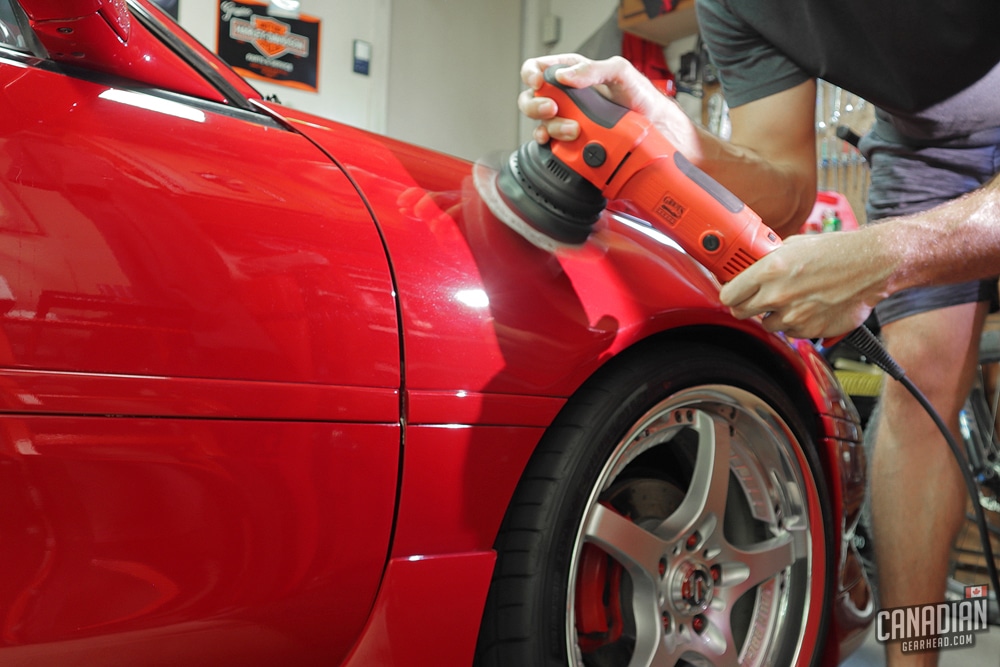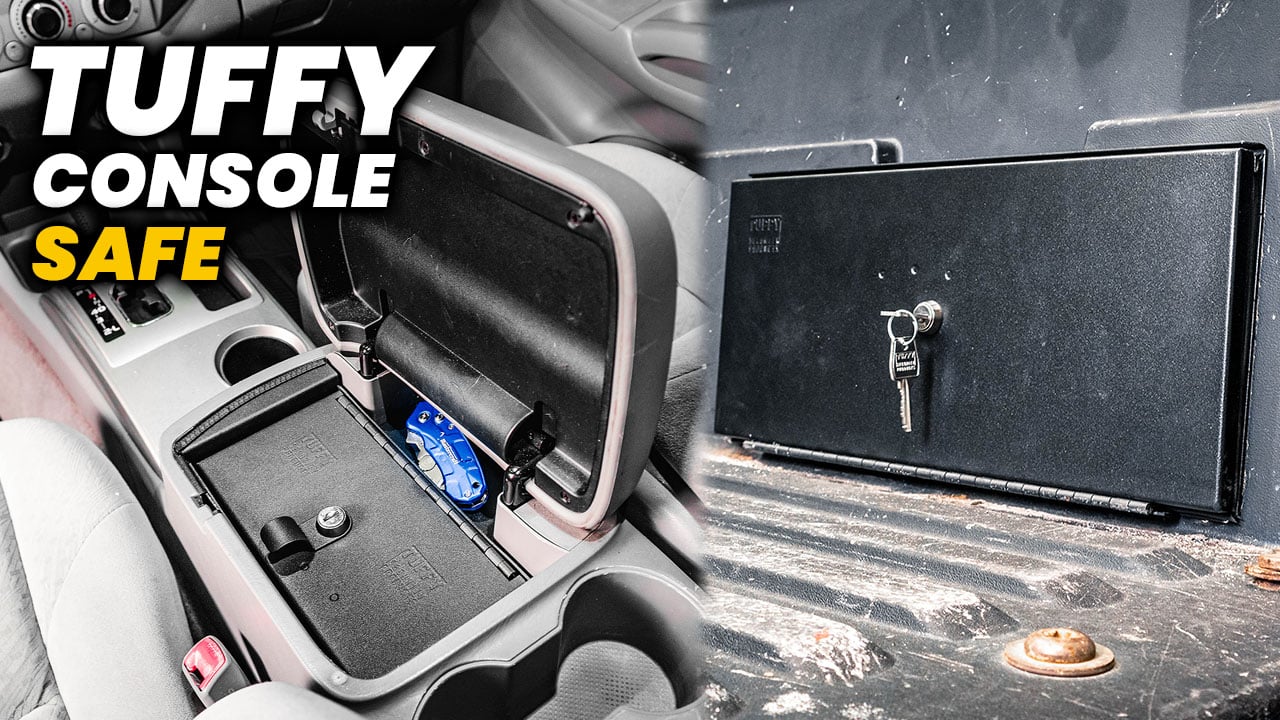Dual action polishers are idiot-proof and rotary polishers damage your paint. At least that’s been common knowledge for quite some time. This can give some people a false sense of security because in reality, it isn’t true.
You can damage your paint by using a dual action polisher carelessly. The risk of burning through paint isn’t as high as it is with a rotary polisher but it’s still there nonetheless. In order to remove scratches, you have to remove paint. When you remove too much, you break through the clear coat.
It really is that simple. Paint correction isn’t something to be taken lightly regardless of what tool you happen to be using. Think of it this way: your paint doesn’t know what type of polisher you’re using. It can only feel the heat, pressure, and friction you’re applying to it. Apply too much of any or all of those and you’re going to be in trouble.
What does “burning through paint” mean?
The phrase “burning through” is from an older era when rotary polishers were much more commonly used in the detailing world. Those machines create so much heat when used improperly that they can actually burn your paint.
In this video, you can see Jimbo Balaam purposely burn paint with a rotary polisher. That is some serious heat.
As you can see, “burning through” paint isn’t exactly a common occurrence. In fact, that specific scenario happens very rarely. That doesn’t mean that heat and paint depth aren’t major issues to consider when polishing a car though. Both are extremely important.
Referring to something as burning through the paint is similar to referring to the act of waxing a car as “polishing”. It’s outdated and no longer very accurate. Polishing is a step used during the paint correction process to refine the paint. Applying a wax is something completely different and really only involves wiping wax on the panel, then buffing it off.
Referring to clear coat failure as burning through is also not accurate. You can polish through the clear coat without getting the paint anywhere near hot enough to burn. It isn’t a heat specific issue – it’s a matter of how much paint or clear coat you have to work with, then removing too much. Again, two totally different situations.
Breaking through the clear coat on a car is a very common mistake among inexperienced detailers. The chances of there being enough heat present to also create a bad smell, smoke, and stain the polishing pad are pretty unlikely though. It’s more accurate to refer to this as polishing through the clear coat, breaking through the clear, or simply clear coat failure.
Check out this review on what I believe is the best dual action polisher for beginners:
Damage that can be caused by a dual action polisher
A dual action polisher isn’t going to be able to burn your paint the way you saw in the video above. It doesn’t have the high power or fixed rotation that a rotary polisher has.
That doesn’t mean you can’t still cause serious damage with one though. These machines have been advertised as no-risk tools even when used improperly and that couldn’t be further from the truth.
Here are some of the ways you could potentially cause damage even with a “safe” dual action polisher:
Overworking an area with thin paint
Thin paint is thin paint. It doesn’t matter what type of machine you’re using – this is a red-alert situation. Any dual action polisher has enough power to be able to remove too much paint or clear coat.
That means you still need to be careful when polishing panels that have already been worked on heavily before as well as near areas that are naturally known for thin paint such as body lines and edges.
A paint depth gauge will help you to understand the history of a paint job before you begin polishing it. While they shouldn’t be trusted blindly, they can show you some warning signs that you might otherwise have missed. You can read more on those gauges in this post:
Creating too much heat
Heat is the enemy when it comes to paint correction and polishing a car. I believe it was Kevin Brown that once said the most ideal condition for paint correction would be underwater (in terms of safety). Creating heat can cause a lot of very bad problems.
Despite what many might say, creating an unsafe amount of heat is absolutely possible with a dual action polisher. Too much heat can cause the paint to blister or even delaminate from the base coat. Remember, paint flexes with variations in temperature. Make it flex too much and there might be no coming back from that.
Another problem with creating too much heat with a polisher is that the paint can swell which in turn hides some of the very defects you’re trying to remove. This is especially common when removing stubborn water spots. With enough heat, the paint will swell and the water spots will disappear. Once it cools, they’ll reappear. This can be extremely frustrating.
Pad contamination
It’s very important to have good control of whatever polisher you use. One slip onto a non painted surface can contaminate your pad and wreak havoc on your paint job. This concept is also the reason why it’s so important to clay bar your car before you use a machine to polish it.
Having your pad come in contact with a tire or the ground can cause foreign abrasives to get stuck in it. Continuing to polish your car with that pad will likely create far worse scratches than the ones you’re trying to remove. You could ruin a paint job by doing this.
Contacting non painted trim pieces
Still on the topic of control, hitting a trim piece with your polisher can cause damage too. Most of the time it will just leave some polish behind or even stain it. That’s annoying but it can usually be fixed with some time and elbow grease.
Hitting textured rubber or plastic trim with a polisher for too long can cause irreparable damage to it though. It’s possible to change the texture or even completely smooth it out depending on how aggressive you were. This is why it’s a good idea to tape off sections that you have trouble avoiding.
Hitting something with the backing plate
You might not realize it but it’s possible to contact other parts of your car with the backing plate of your polisher. You need to be careful when working near things like adjacent panels, door handles, and mirrors. Scuffing them with your plastic backing plate can cause damage so it needs to be avoided.
This can even happen on a flat panel if you’re sloppy enough rather than keeping the pad as flat as possible.
How to avoid damaging your paint with a DA polisher
Aside from pushing too far on thin paint, heat is the number 1 concern when polishing paint no matter what machine you’re using. There are a few ways you can minimize that risk.
Work in the right environment
It’s always best to work indoors when it comes to paint correction. There are times when you have no choice but to work outside though. In that case, it’s important to at least find some shade and work on a day that isn’t super hot.
One way to know whether the temperature of the paint is safe to work on or not is simply to feel it. If you’re unable to hold your hand on it for 5+ seconds without having to pull it away, it’s far too hot to be polished.
Don’t work an area too long
The longer you keep a polisher spinning in one specific area, the more heat will be built up – even with a dual action machine. It’s important to keep moving rather than staying in one spot for a long time.
If you find yourself having to focus on a certain scratch for a while, make sure to move to other areas periodically then come back for more. That will allow the area with the scratch to cool down a bit.
Choose the right method
We all know the importance of using a test spot to come up with the least aggressive way to get the job done. But did you know that the “least aggressive” method isn’t always the most mild option?
Take for example a deep, stubborn scratch. Hitting it over and over with a mild compound on a dual action polisher might seem like the most gentle approach but it might not be. By doing that, you’re working the paint for a much longer time, in turn creating more heat and removing more paint. You’re basically trying to melt the scratch out.
The least aggressive approach in that case could be to hit it quickly with a more aggressive rotary polisher or even switching to wet sanding. Believe it or not, this can be the most gentle way to get the job done since you’re creating less heat and removing less paint.

Tim is the creator of Canadian Gearhead. His experience with auto detailing and working for Toyota shows through all of the articles posted here. He runs the Canadian Gearhead site and YouTube channel full-time now and currently owns a 2007 4runner, 2006 Tacoma, and 1991 MR2. Read more about Tim:







Leave a Reply